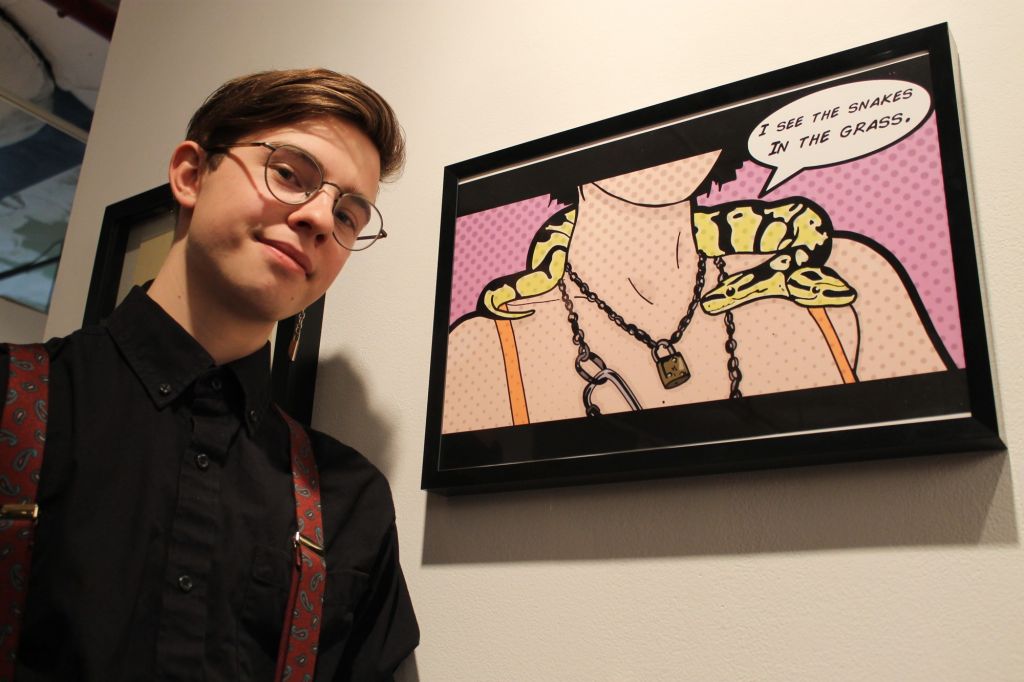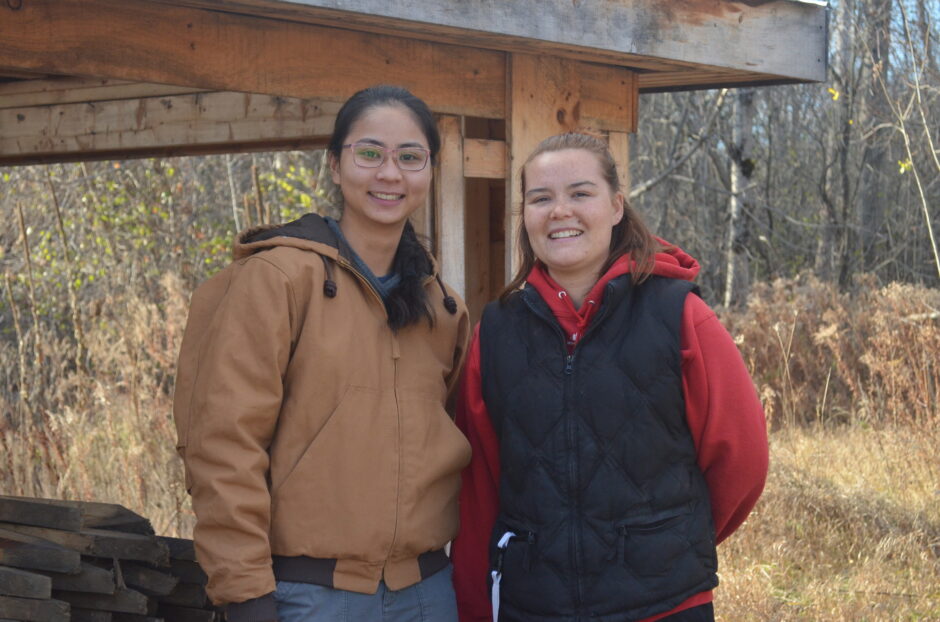Art students show off their work in Vessel

Rows of tungsten lights hang from ventilation ducts inside the white-walls of the gallery room, illuminating the brown-tiled floor where sculptures and paintings are present for the public eye.
This is the Loft Art Studios, at 951 Gladstone Ave., where the crafts are the work of students in the introduction to fine art program at Algonquin. Their course requires them to prepare an exhibition called Vessel, which takes place off college property for the first time on April 19. The Algonquin Commons Theatre hosted it in previous years.
Each student has the responsibility of making two pieces of art for the show. Some of the works have an underlying message, others an explicit one.
Alex Bateman, a purple-haired student of the program who also works in the personal support field, explains the stories she is conveying behind her paintings. In one of her pieces is an elderly man with spiky green hair wearing a blue bathrobe and a smile. The man is originally English, born in Thailand and brought to Canada on a boat during WWII. He is completely blind, so Bateman wanted to make a portrait in memory of him that he can understand.
“The painting has little bumps in it,” she said. “It has a Braille feel to it.”
Her second painting is meant to signify today’s “snowflake” culture. Using only the colour red, the canvas shows a gaping mouth being fed what appear to be dotted lines coming out of an open medicine bottle. With this image, Bateman is expressing her belief in over-medication of youth, specifically those with ADHD.
“A lot of pharmacies will bribe doctors to prescribe certain pills,” she said.
Bateman describes herself as an energetic person and she also has this disorder. She said medication just makes a person more tolerable to the general public, and the way we are seeing and treating these victims has become a cultural norm. The popular use of this medication, along with others such as vitamin supplements, leaves her wondering if there are any detrimental long term effects.
As for the dotted lines, there is also an explanation.
“I didn’t want a specific medication,” she said.
Culture and counterculture are present in the exhibit. Markus Wehrmann, wearing circular contemporary glasses and a black dress shirt strapped by red suspenders, decided to portray a skinny, black-haired woman in both of his works.
His first image has the women stab her chest with a dagger that has a skull ornament on its handle. Coming out of her head is a thought bubble that says “the real hell is inside your head.” The message is about the state of mind.
“I find a lot of people punish themselves on mental health,” he said.
The second piece shows the woman bracing a chain, with a double-headed snake around her neck. This is to show Wehrmann’s perception of people. His friends went out one night without him, which inspired him to to feature the snake — a symbol of betrayal.
Wehrmann was one of the youngest apprentices at a tattoo parlour, where he adopted a counter-movement mentality. He does not like to focus on big issues, but rather dives deep into underlying meaning. This, he said, is meant to be shown in his artwork.
Not every student decided to work in two dimensions. Moises Lozano made a sculpture of Earth the size of an astronaut’s helmet, with a hole where his face is. The helmet has a church sticking out with trees around it and flames sprawled around the bottom of the globe. Renaissance is the theme of the sculpture.
“I think everyone dies and is reborn, always,” he said.
The monastery is a symbol to show that everyone goes through though times will always return to their spiritual selves.
“Faith influences artwork, which scares me sometimes,” said Lozano.
He describes his sculpture as a whole to be gruesome yet visually pleasing — experimental.
“I haven’t done many sculptures in the past and it is a good way to express emotion,” he said.
Gillian King, the students’ mentor, was overwhelmingly surprised by the response of the crowd. She thought it was a good idea to bring the exhibit out to the community – an idea that was met with much support.
“It’s been a way higher attendance than we were expecting,” she said.
.








